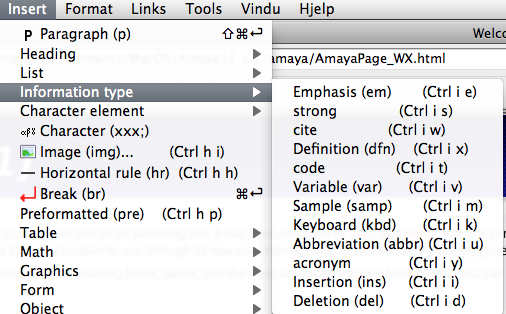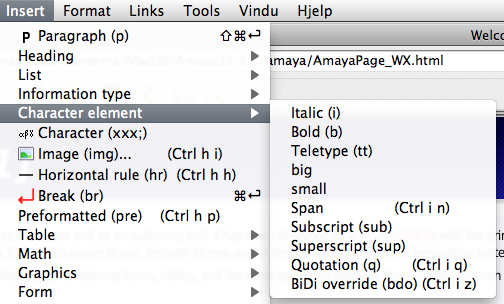- From: Leif Halvard Silli <xn--mlform-iua@xn--mlform-iua.no>
- Date: Wed, 6 Apr 2011 17:42:46 +0200
- To: www-archive@w3.org, Laura Carlson <laura.lee.carlson@gmail.com>
- Message-ID: <20110406174246448558.7446fd24@xn--mlform-iua.no>
Leif Halvard Silli Tue, 5 Apr 2011 04:15:57 +0200 >> Laura Carlson Mon, 4 Apr 2011 03:07:22 -0500 >> Screenshot of Adobe Dreamweaver CS3 properties menu is attached. It is >> the file dwproperties.gif . >> >> It offers "B" and "I" buttons but no "U" button. >> >> The B button produces the strong element: <strong>B</strong>. >> The I button produces the em element: <em>I</em>. Btw, Laura, you said 'menu', but it looks as a Toolbar. Hence a correction: Amaya is identical to Dreamweaver: it provides <strong> disguised as [B] and <em> disguised as <i>. > CKEditor offers U in properties menu. http://ckeditor.com/demo > > So does W3's won Amaya. What Amaya does is that it divides the phrase elements in 'Info type' and 'Character type'. In the first, the 'semantic' elements are found: <em>, <strong>, <cite> etc. In the second, the character style elements are found: <b>, <i>, <tt>. (See attached images.) One could ask: now that HTML5 claims that <b> is semantic, should Amaya move the <b> over to the Info elements menu? I don't think Amaya's users would become any wise by such a move! Because, HTML5's 'semantification' of <b> and <i> is not a semantification but more a an advice about how <b> and <i> could be used wisely. The same kind of advice could be provided for <u>. Leif H Silli
Attachments
- image/jpeg attachment: InfoElementsAmaya.jpg

- image/jpeg attachment: CharElementsAmaya.jpg

Received on Wednesday, 6 April 2011 15:43:15 UTC